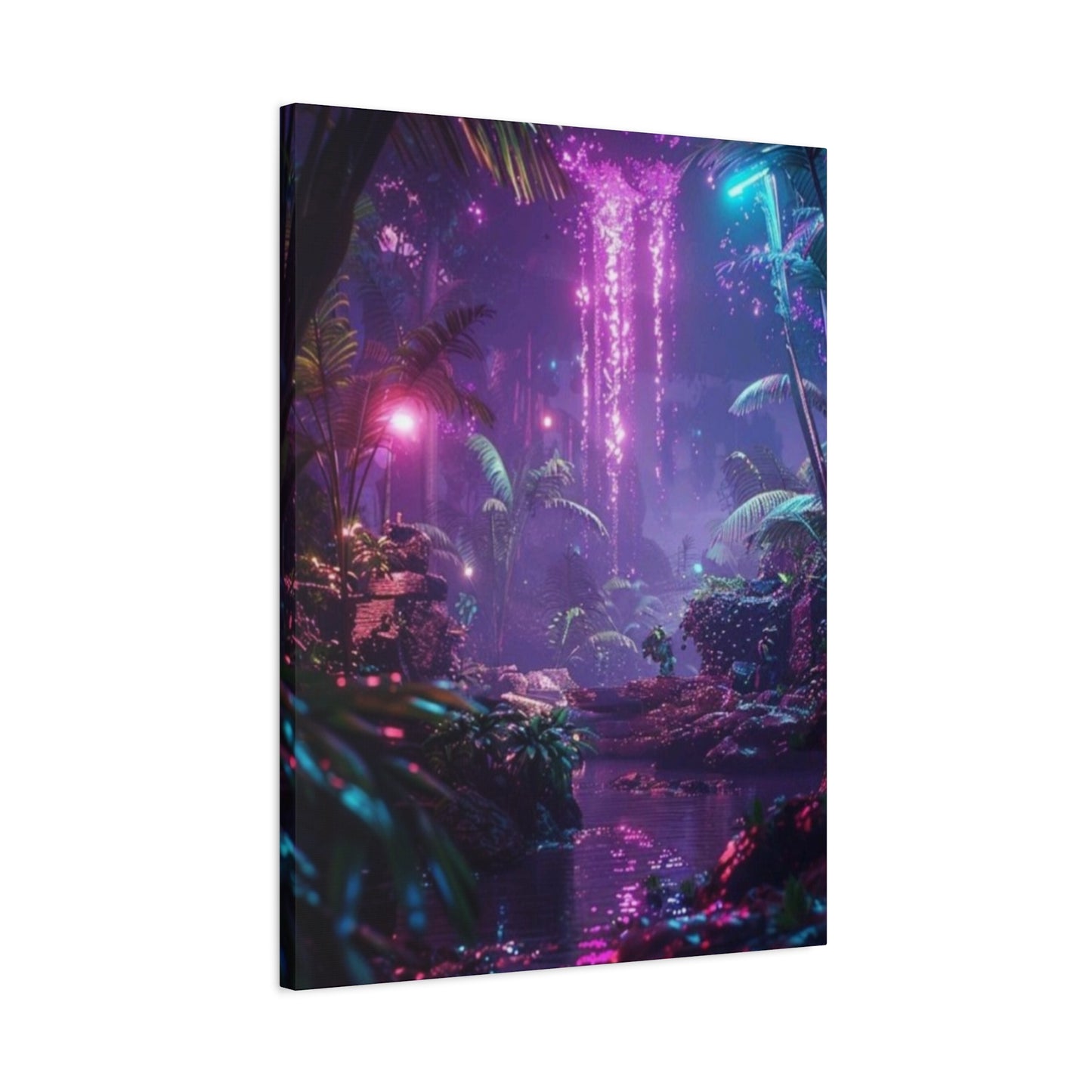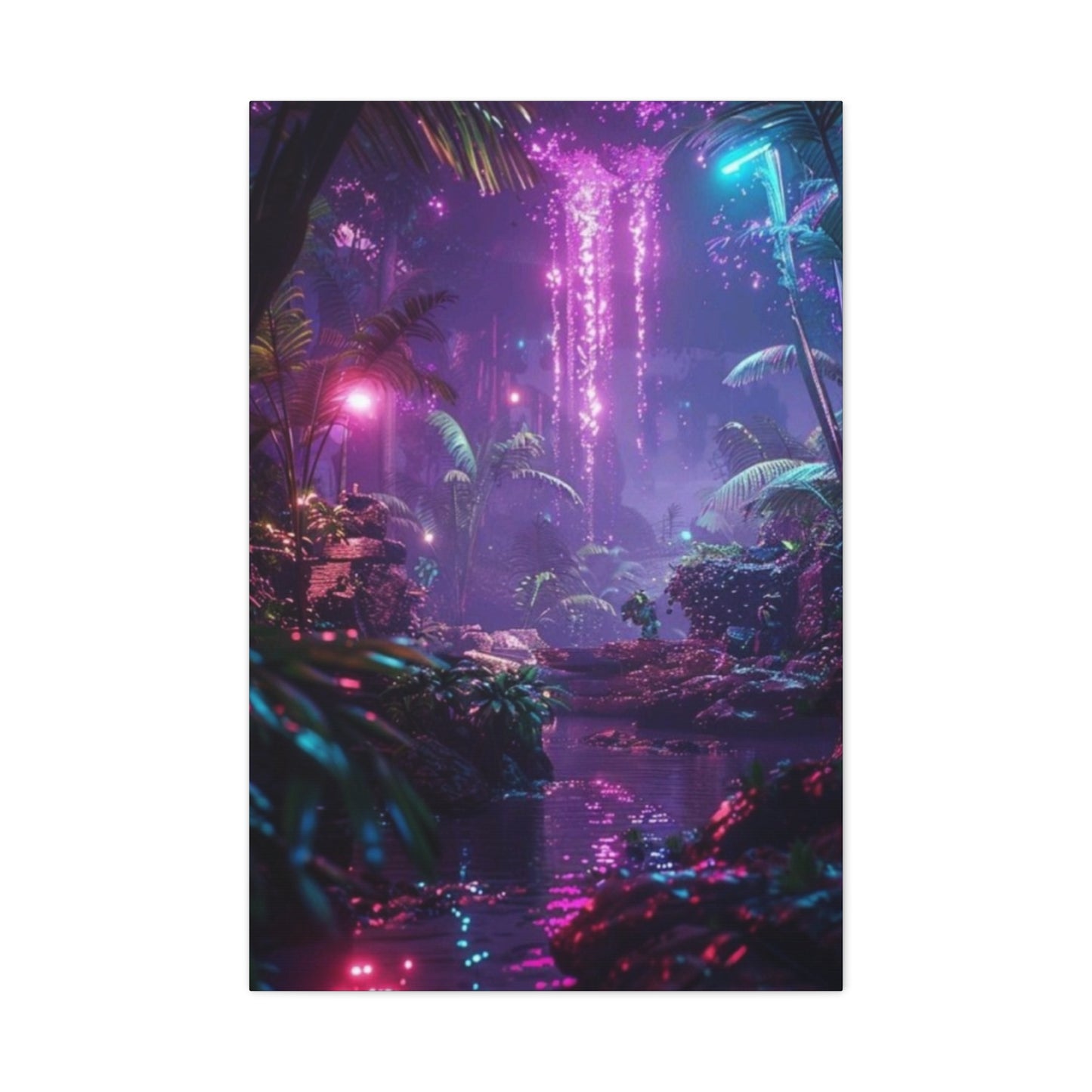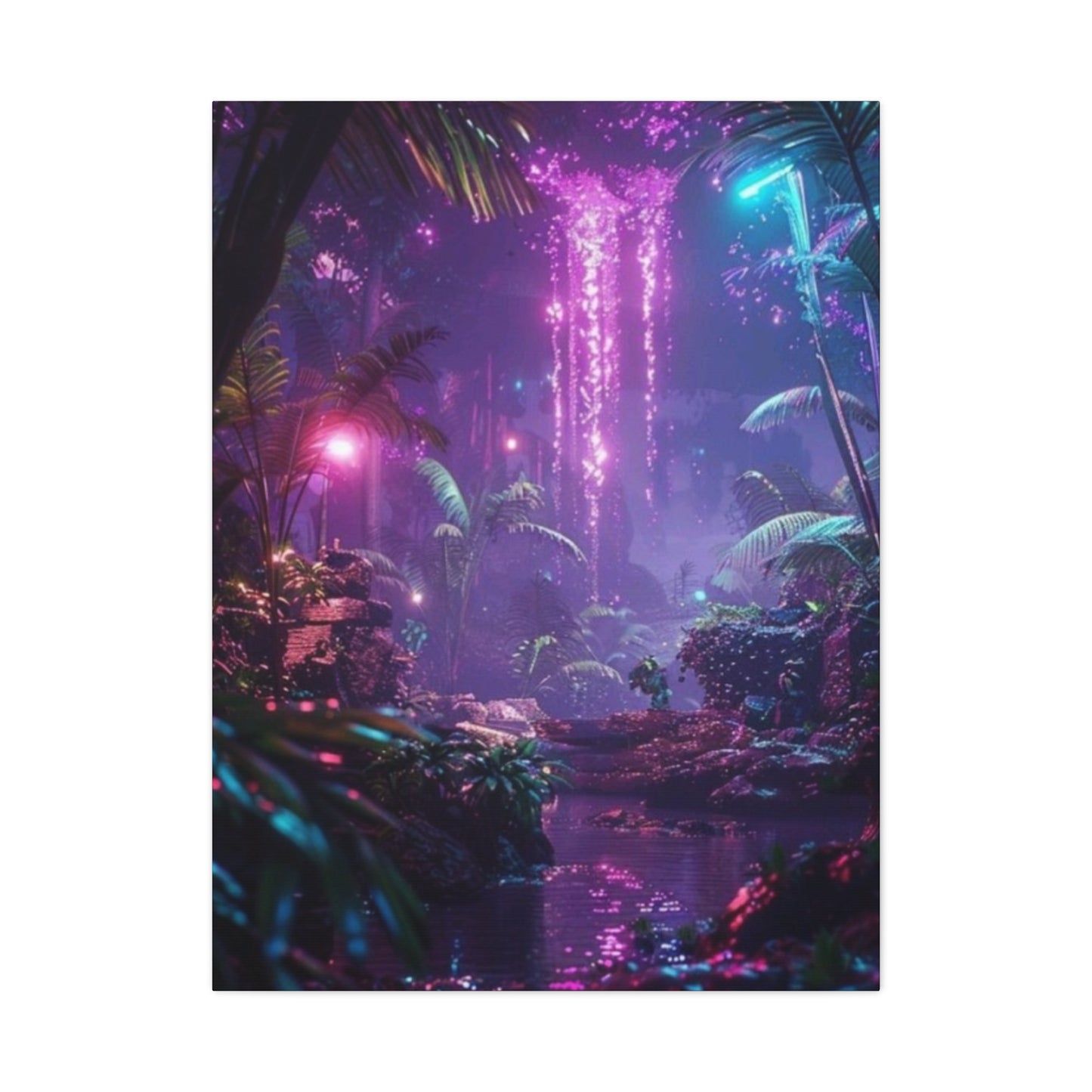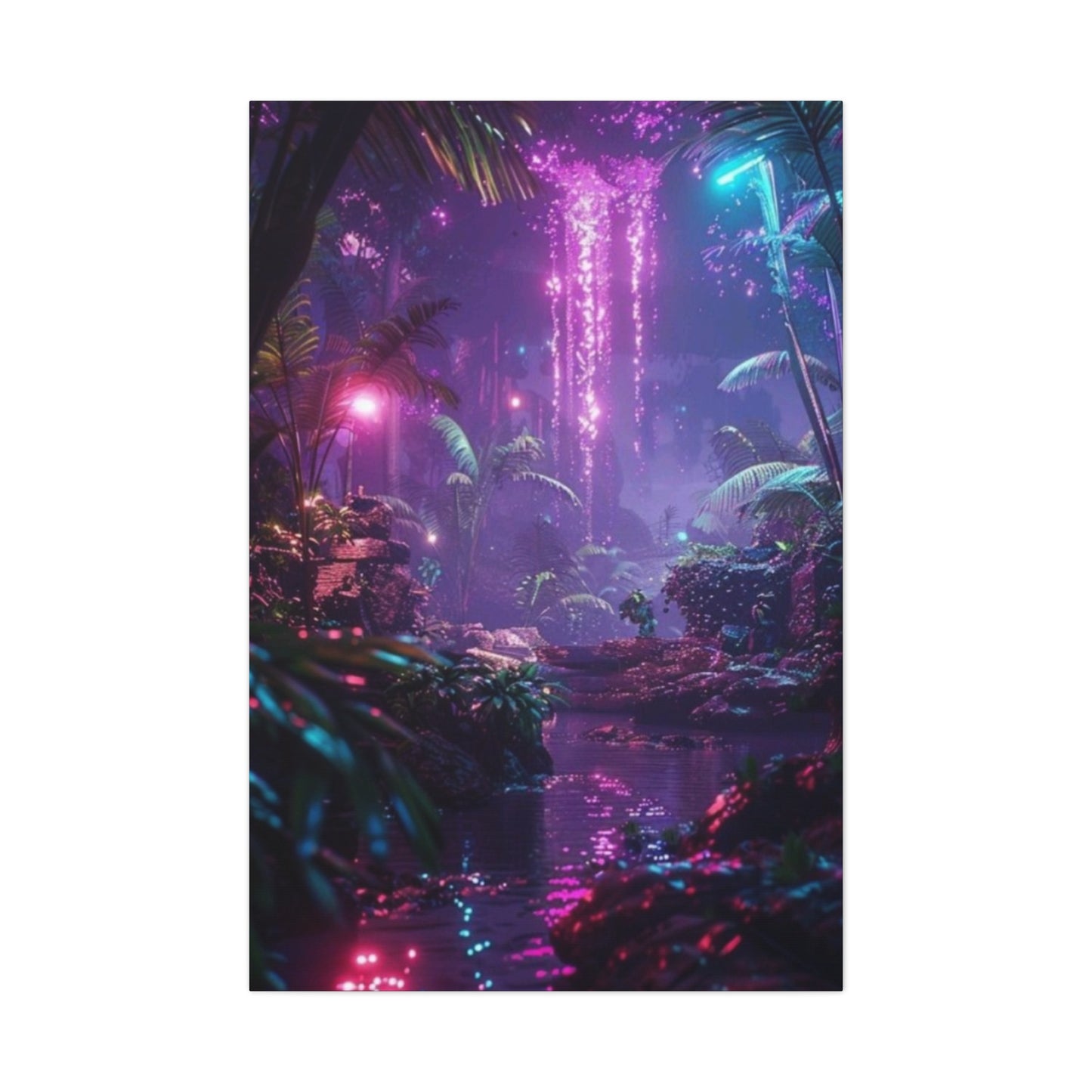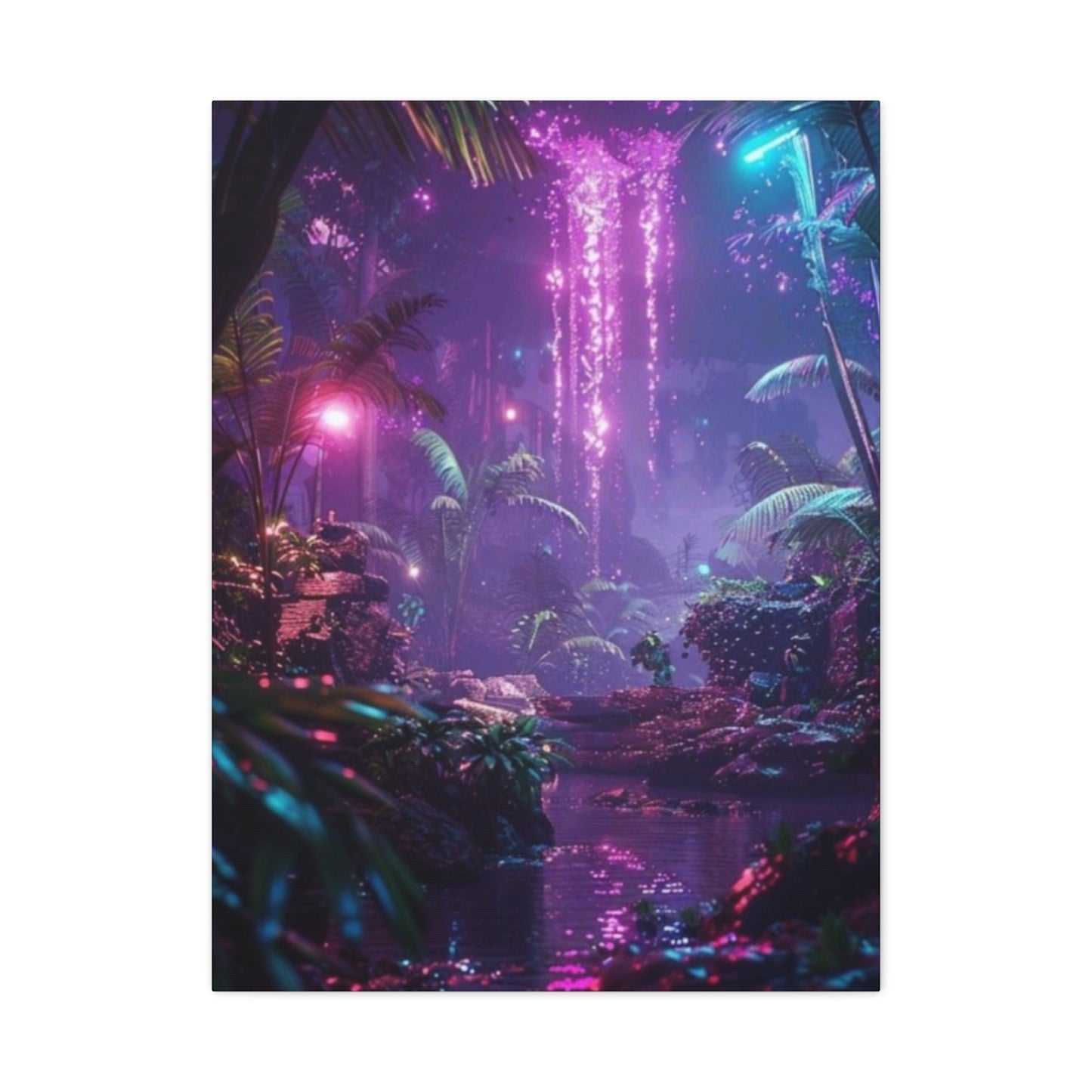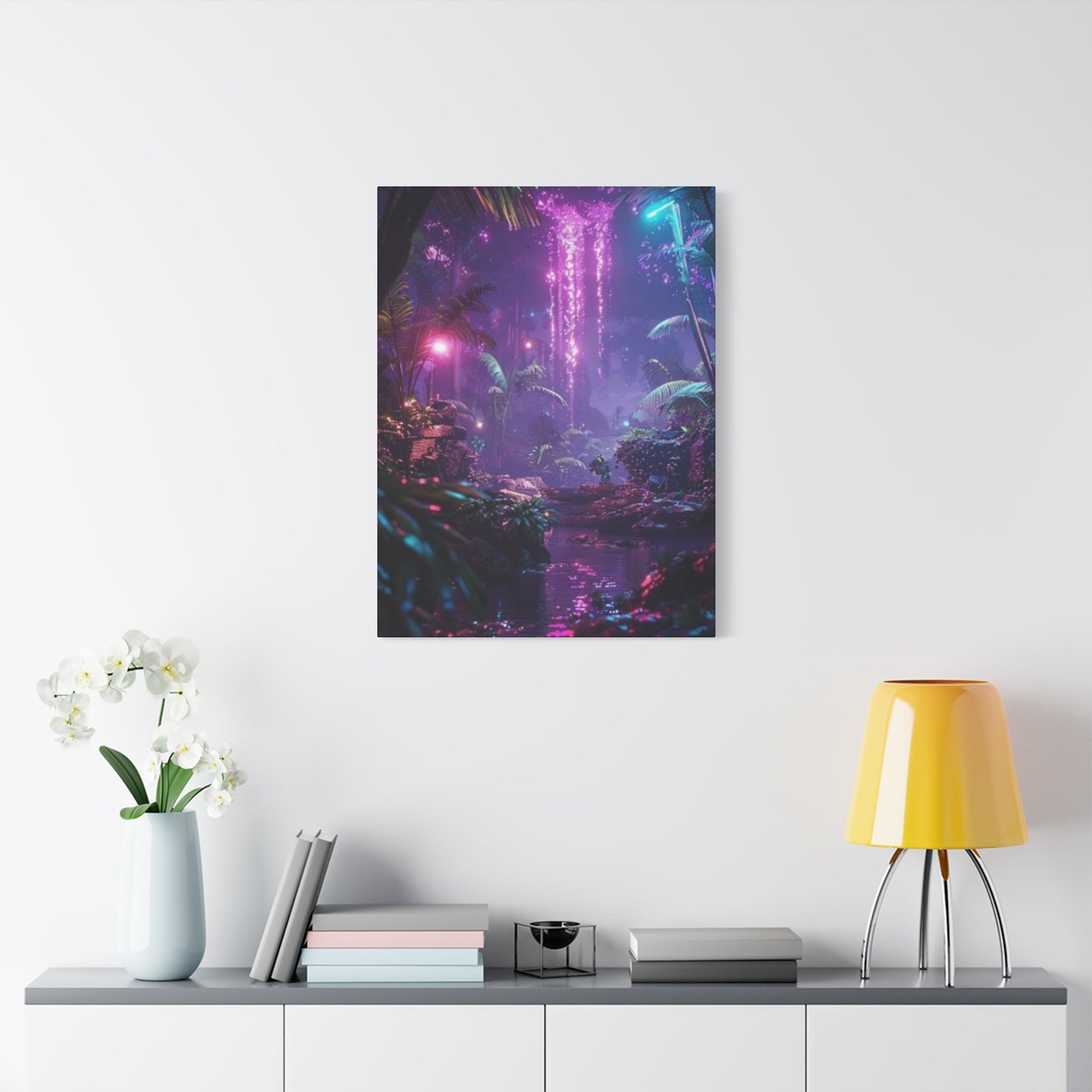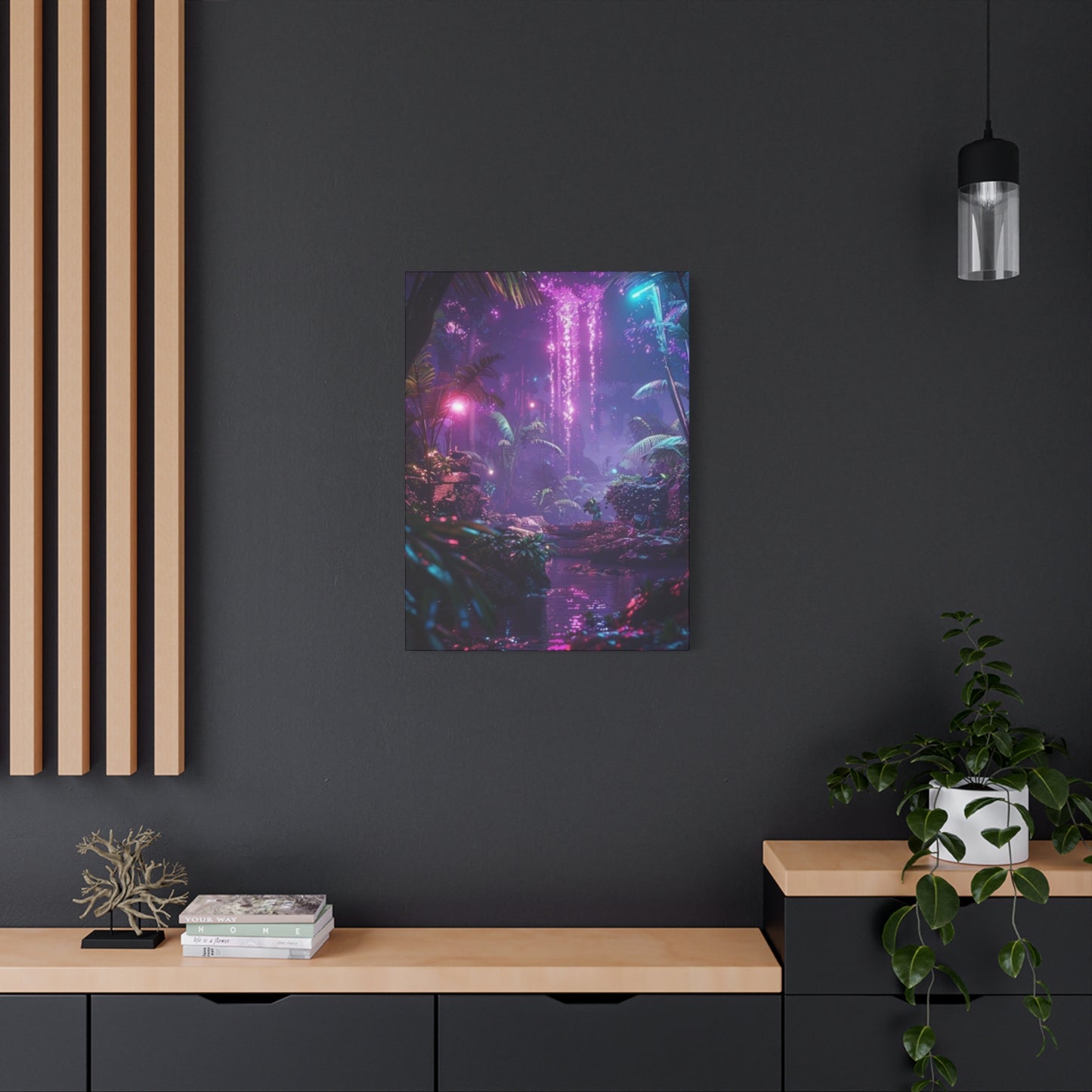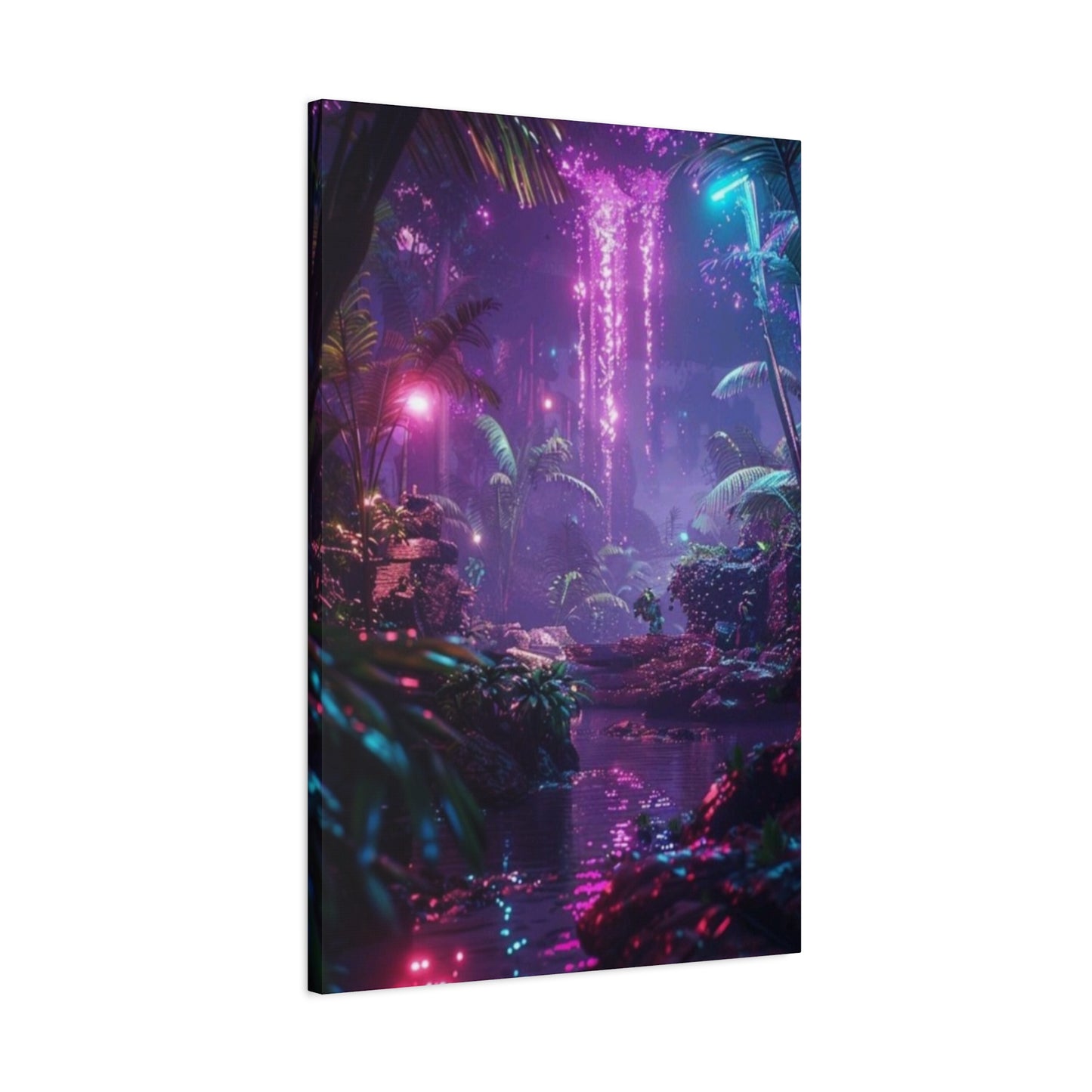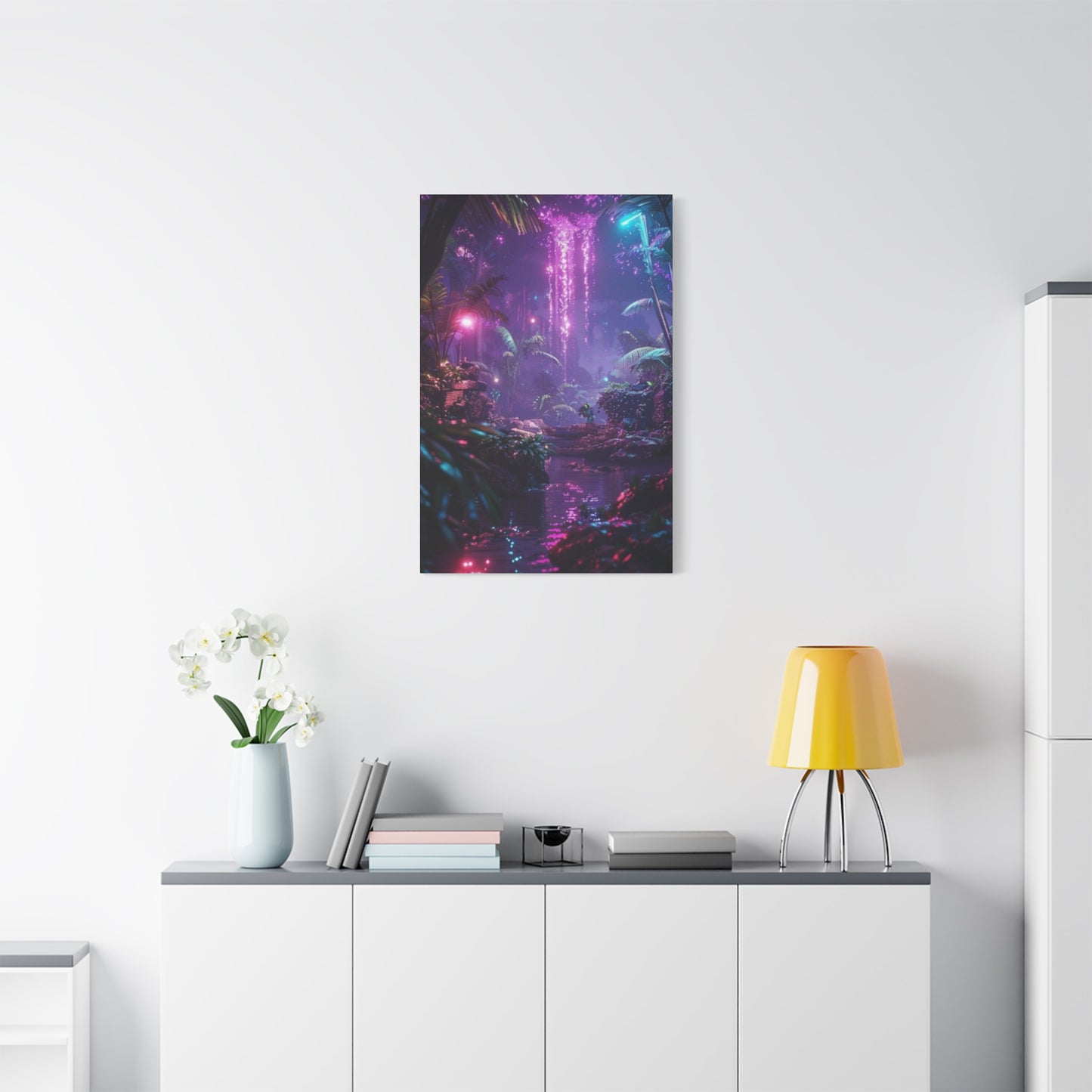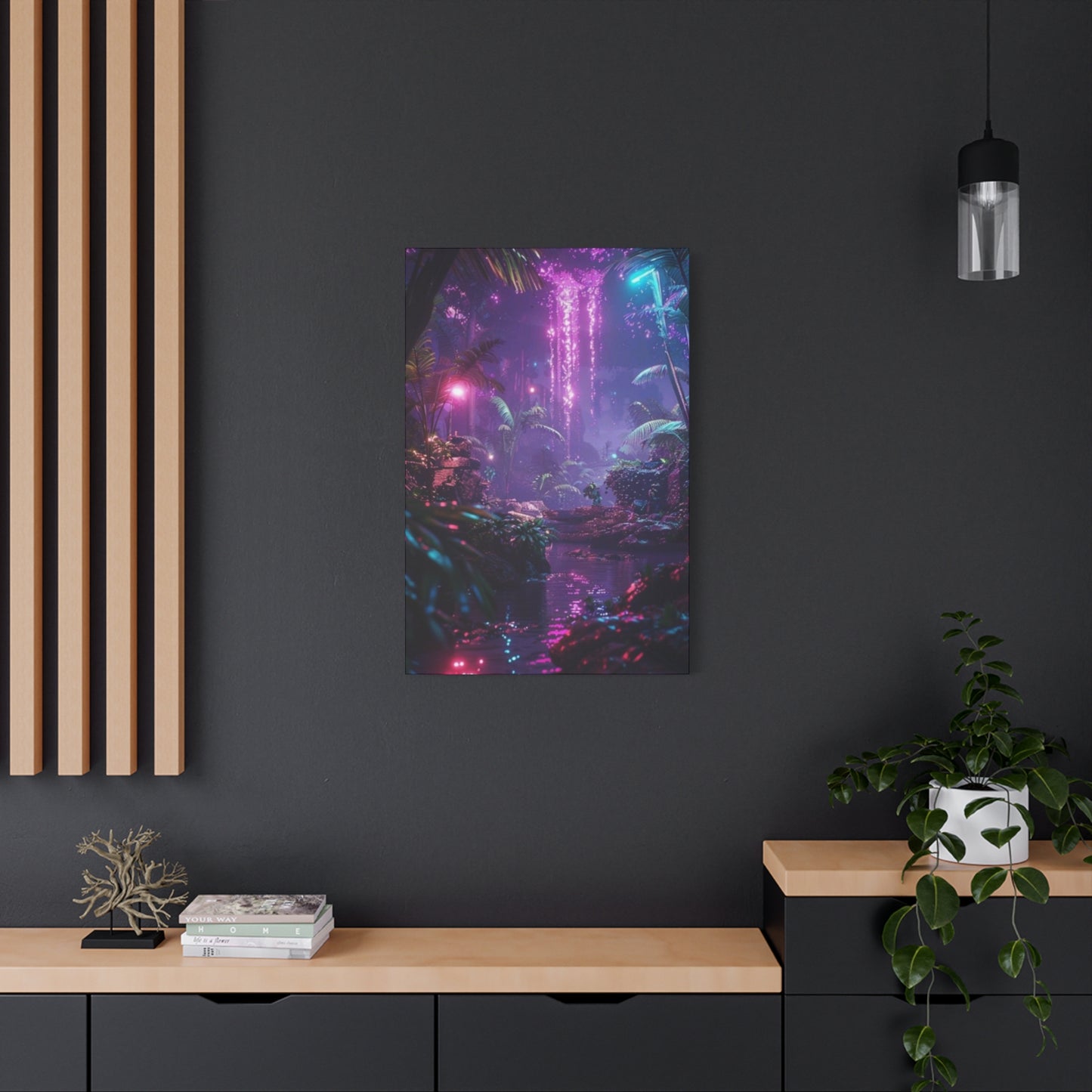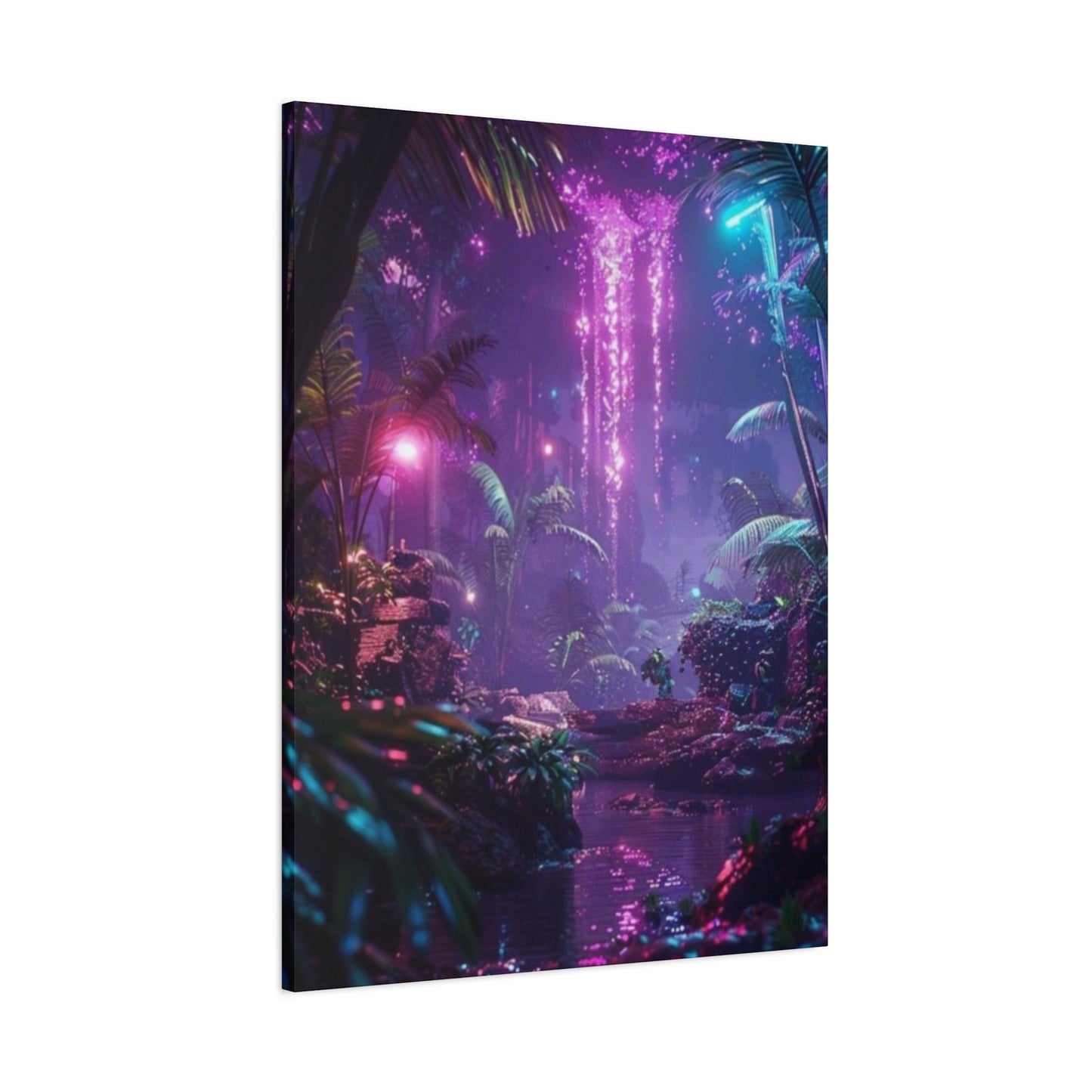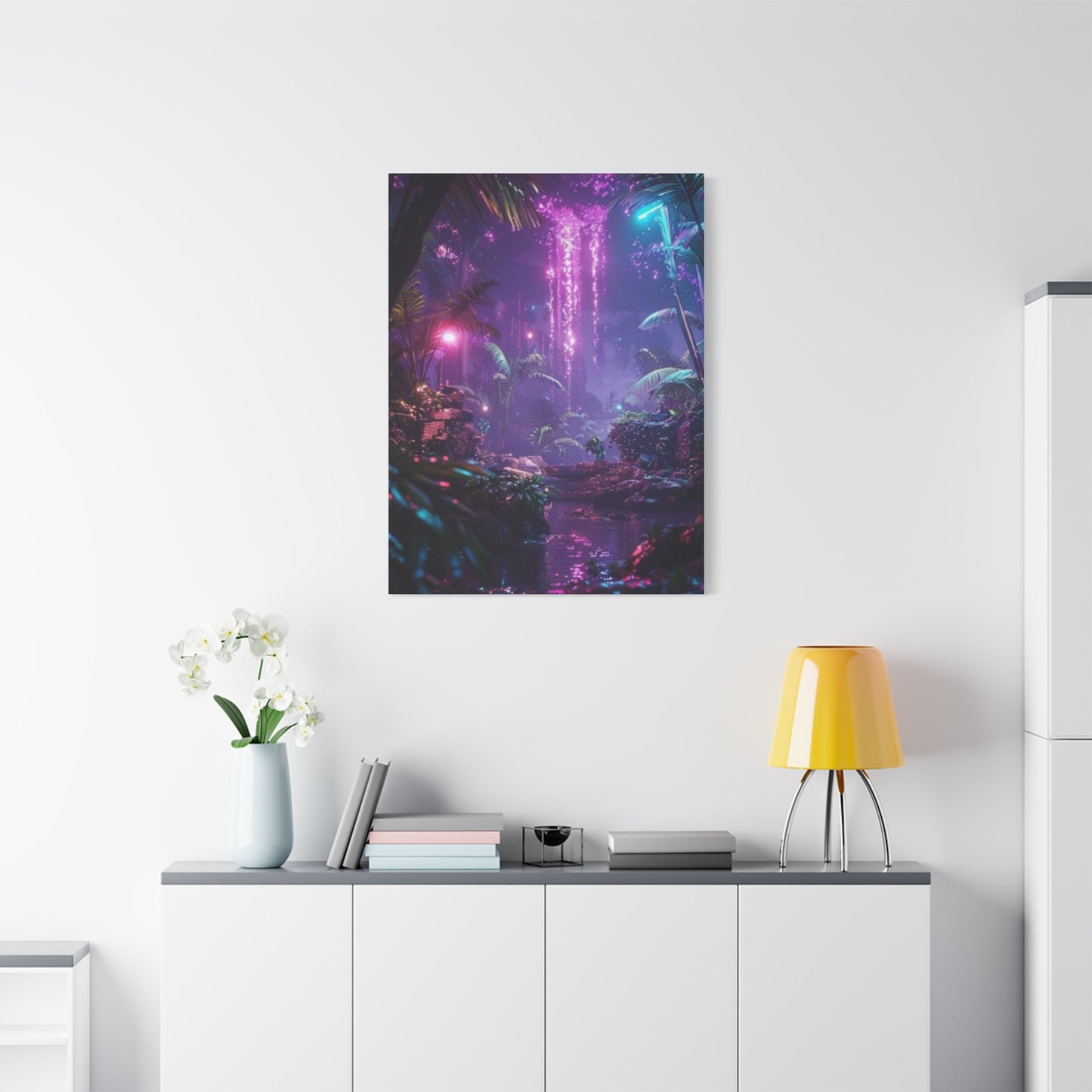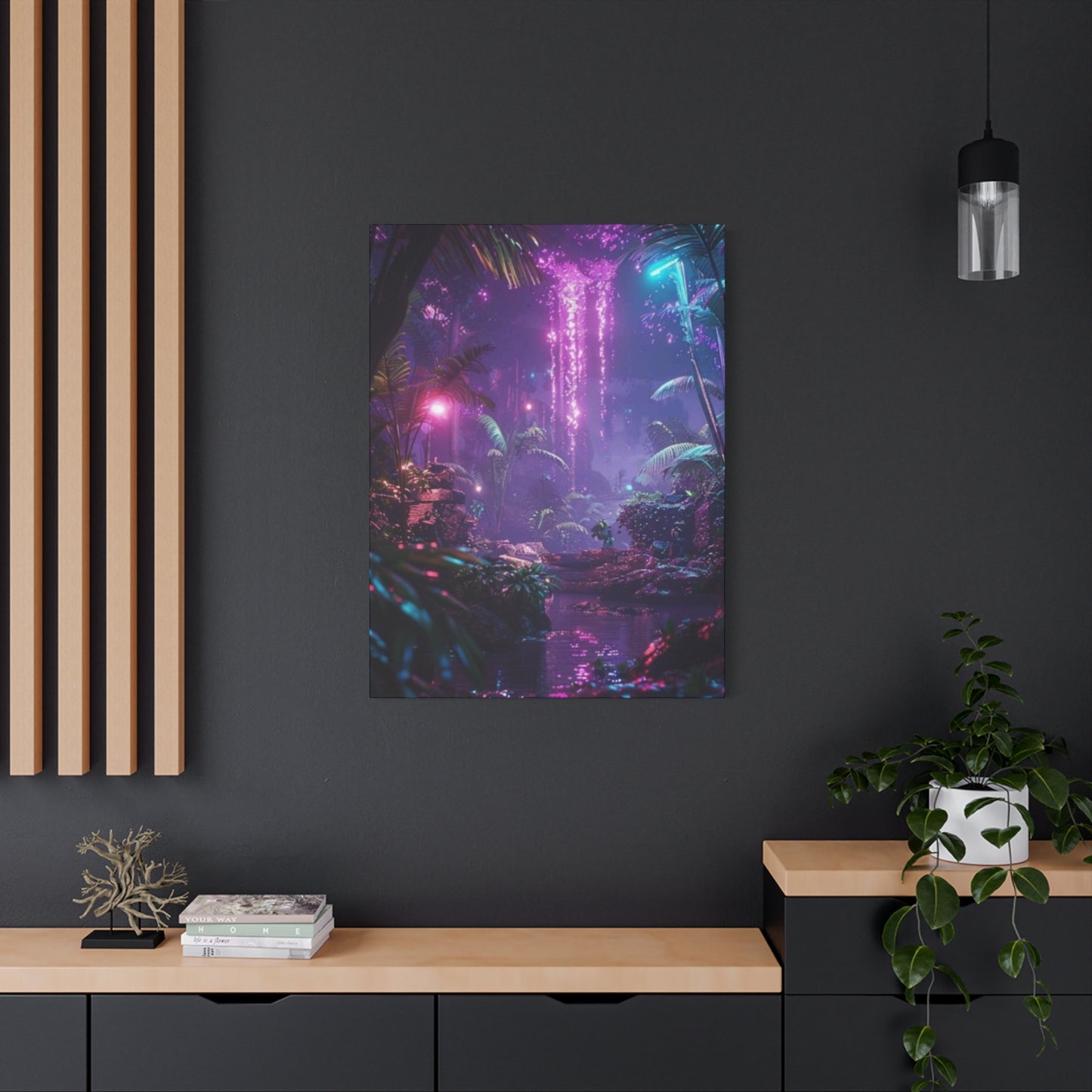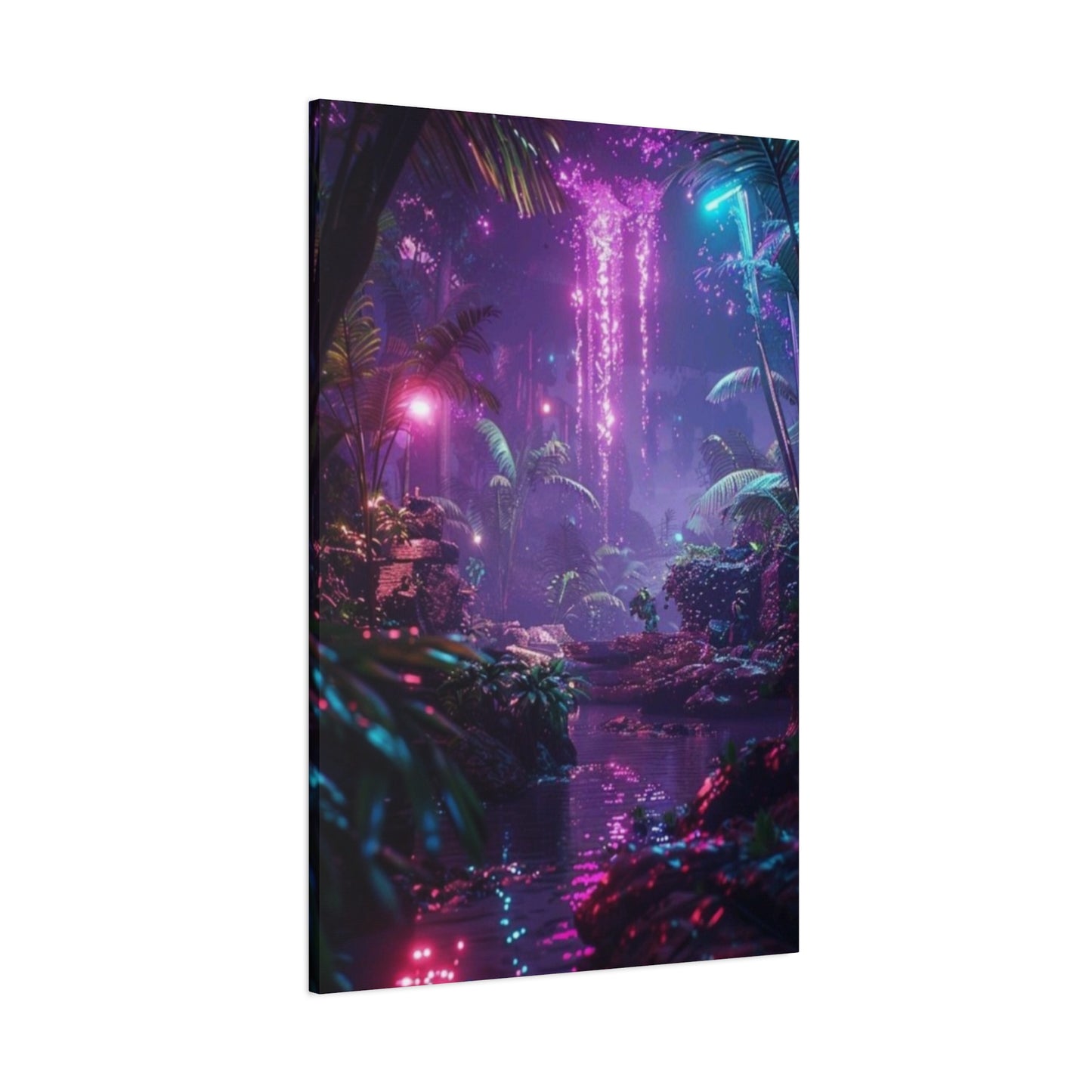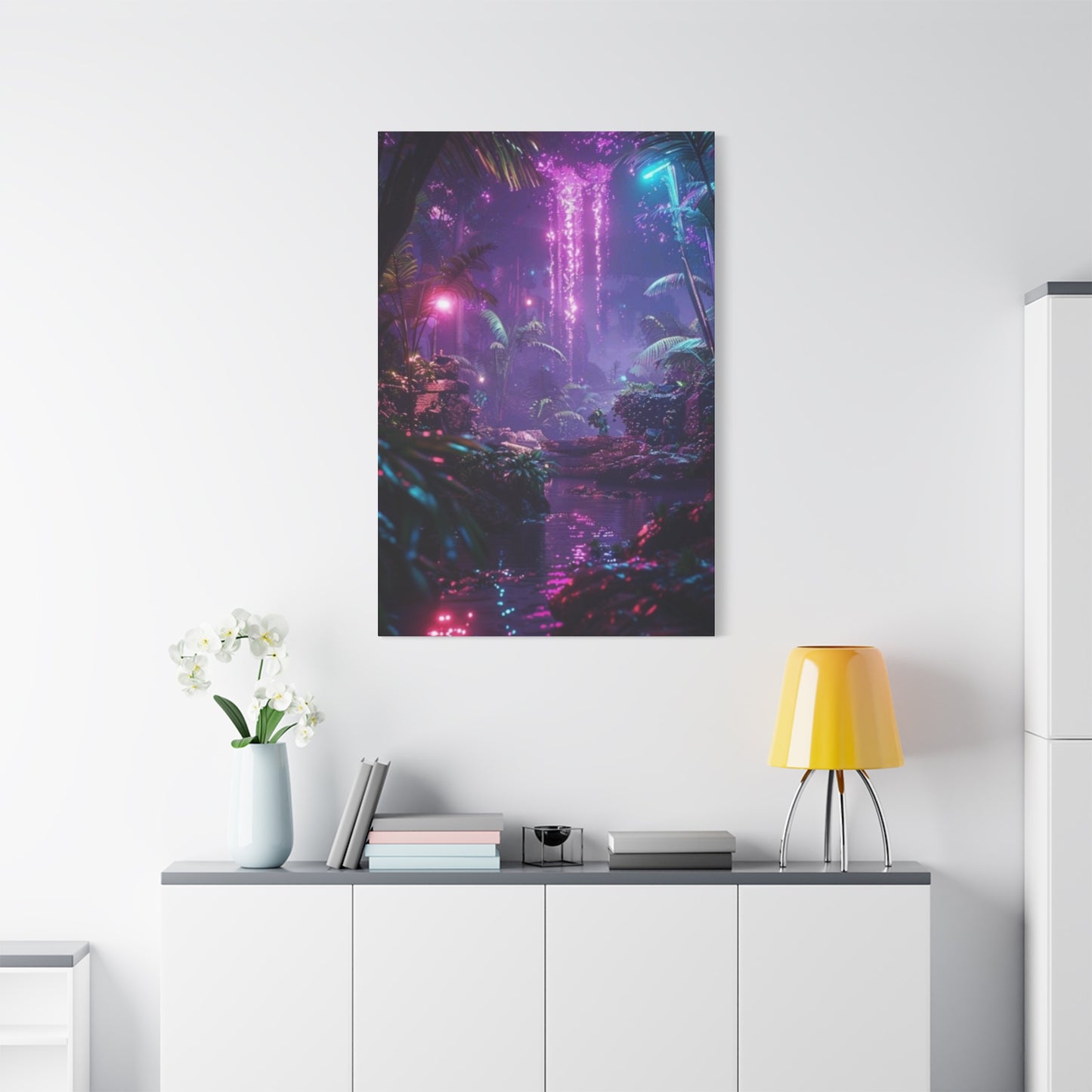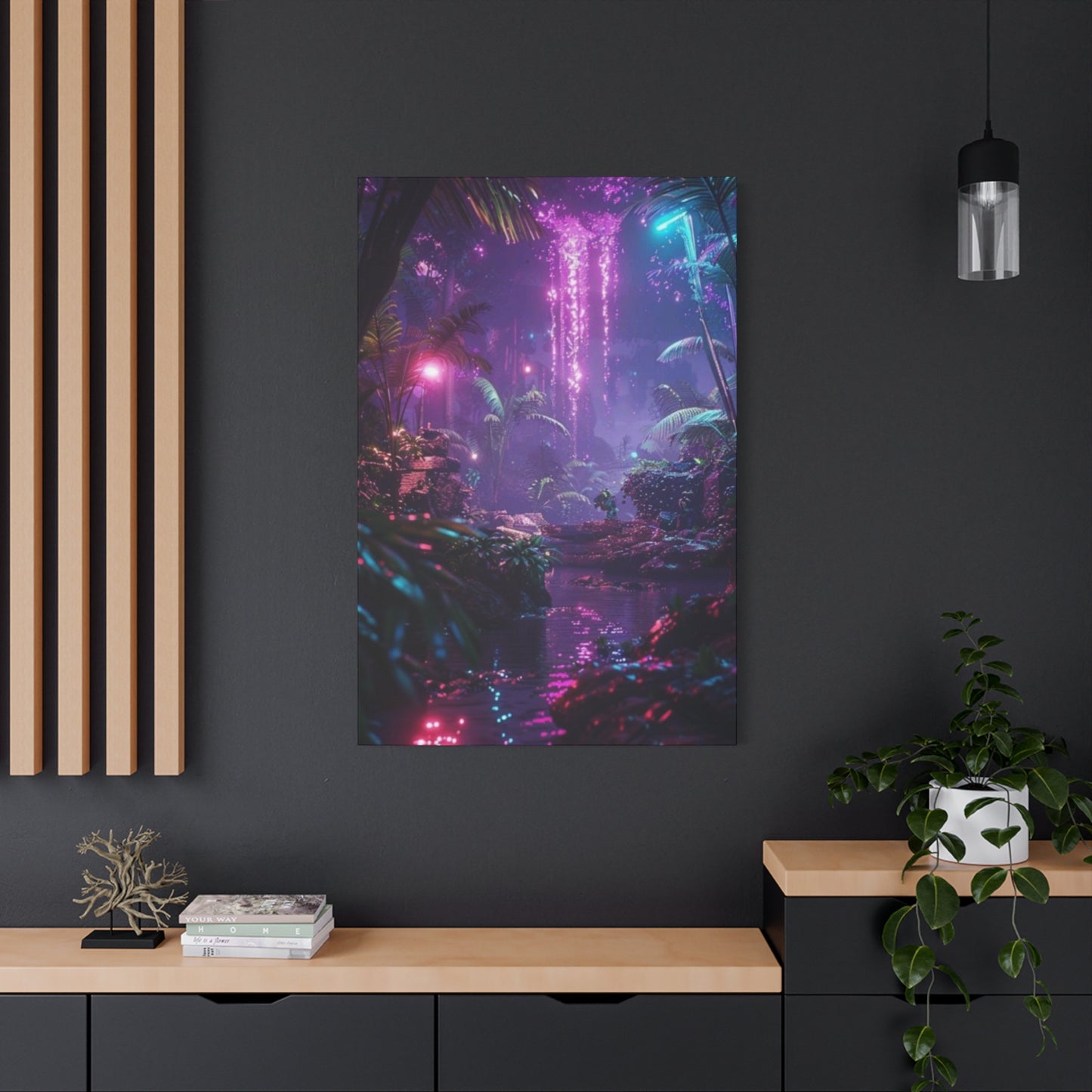Luminescent Wildlife Wall Art: Creating Captivating Glow Effects for Your Home
The world of artistic expression has evolved dramatically with the introduction of luminescent technologies and glowing effects. Wildlife enthusiasts and art collectors alike are discovering the mesmerizing beauty of Art that captures the essence of nature while incorporating stunning light effects. This revolutionary approach to decorative pieces transforms ordinary rooms into extraordinary environments where the natural world comes alive through innovative lighting techniques and creative applications.
Modern homes are increasingly embracing unique decorative elements that serve both aesthetic and functional purposes. Glowing wildlife Art represents a perfect fusion of artistic creativity and technological innovation, offering homeowners an opportunity to create distinctive visual experiences that change throughout the day. These pieces utilize various techniques including phosphorescent materials, LED integration, and specialized pigments to achieve their striking luminescent effects.
The appeal of luminescent animal Art extends beyond mere decoration. These pieces create dynamic environments that respond to lighting conditions, offering different visual experiences during daylight hours versus evening darkness. This adaptability makes them particularly valuable for creating focal points that maintain their impact regardless of ambient lighting conditions.
Contemporary artists are pushing the boundaries of traditional wildlife representation by incorporating modern lighting technologies and innovative materials. The result is Art that maintains the authentic beauty of natural subjects while adding contemporary flair through strategic use of glowing elements. This combination appeals to diverse audiences, from nature enthusiasts to modern art collectors.
Creating Dramatic Neon and Luminescent Effects in Animal Art
The incorporation of neon and glowing effects into wildlife Art requires careful consideration of both artistic and technical elements. Artists working in this medium must balance the natural beauty of their subjects with the dramatic impact of luminescent enhancement. The key lies in understanding how different lighting effects interact with various animal subjects and environmental contexts.
Neon effects in wildlife Art can be achieved through multiple approaches. Traditional neon tubing, while effective, has largely been replaced by more versatile LED strip lighting systems that offer greater flexibility in application and maintenance. These modern alternatives provide consistent coloration, lower heat output, and improved longevity compared to traditional neon systems.
The selection of appropriate color temperatures plays a crucial role in maintaining the authenticity of wildlife subjects while enhancing their visual impact. Warm color temperatures tend to complement mammalian subjects effectively, while cooler temperatures work well with aquatic or nocturnal animals. Understanding these relationships helps artists create more cohesive and visually appealing compositions.
Layering techniques are essential when incorporating glowing effects into wildlife Art. Base layers establish the foundational imagery, while successive layers build depth and complexity. The luminescent elements are typically applied as accent layers, highlighting specific features or creating atmospheric effects that enhance the overall composition without overwhelming the primary subject.
The positioning of glowing elements requires careful consideration of natural light patterns and animal anatomy. Effective placement mimics natural phenomena such as reflected light from water surfaces, moonlight filtering through forest canopies, or the natural luminescence found in certain species. This approach maintains visual credibility while creating stunning artistic effects.
Modern phosphorescent materials have revolutionized the possibilities for creating long-lasting glow effects. These materials absorb light energy during daylight hours and release it gradually in darkness, creating sustained luminescent effects that can last for hours. The development of high-performance phosphorescent pigments has made it possible to achieve brighter, longer-lasting effects than ever before.
Digital printing technologies have also opened new possibilities for creating glowing wildlife Art. Specialized inks and printing substrates can incorporate luminescent properties directly into printed images, allowing for mass production of glowing effects that were previously only achievable through hand-painting techniques.
Selecting Optimal Animal Subjects for Luminescent Art
Not all wildlife subjects are equally suited to luminescent treatment. Certain animals lend themselves naturally to glowing effects due to their nocturnal habits, natural coloration, or cultural associations with mystery and magic. Understanding which subjects work best helps artists and collectors make informed decisions about incorporating glowing elements into their Art.
Nocturnal predators such as wolves, owls, and large cats are particularly effective subjects for luminescent treatment. These animals naturally inhabit environments where lighting plays a dramatic role, making the addition of glowing effects feel authentic and purposeful. The piercing eyes of these creatures can be enhanced with subtle luminescent effects that create haunting and memorable visual experiences.
Marine life offers exceptional opportunities for glowing Art applications. Many ocean creatures naturally exhibit bioluminescence, making artificial glowing effects feel completely natural and scientifically accurate. Jellyfish, deep-sea fish, and marine mammals can be depicted with stunning luminescent effects that mirror their natural environments and behaviors.
Birds of prey, particularly those active during twilight hours, make excellent subjects for luminescent Art. Eagles, hawks, and falcons can be depicted with glowing effects that emphasize their keen eyesight and powerful presence. The dramatic silhouettes of these birds against twilight skies create natural opportunities for incorporating beautiful luminescent backgrounds.
Mythical or fantasy interpretations of real animals also work exceptionally well with glowing effects. Unicorns, dragons depicted as evolved reptiles, or spiritually enhanced versions of real animals can incorporate extensive glowing elements without compromising visual credibility. These subjects allow artists maximum creative freedom in applying luminescent effects.
Forest-dwelling creatures such as deer, elk, and smaller mammals can be effectively enhanced with subtle glowing effects that suggest magical or spiritual qualities. These treatments are particularly popular in children's rooms and fantasy-themed environments where the goal is to create wonder and imagination rather than strict realism.
Arctic animals present unique opportunities for luminescent treatment due to their association with the aurora borealis and other natural light phenomena. Polar bears, arctic foxes, and penguins can be depicted with aurora-inspired backgrounds or subtle luminescent effects that reference the extreme lighting conditions of their natural habitats.
The cultural significance of certain animals also influences their effectiveness as subjects for glowing Art. Animals with strong spiritual or mythological associations, such as wolves, eagles, or elephants, can incorporate luminescent effects that enhance their symbolic meaning and emotional impact.
Innovative Mixed Media Approaches for Luminescent Wildlife Pieces
The combination of traditional artistic techniques with modern luminescent technologies creates exciting possibilities for mixed media Art. Artists working in this field must develop skills across multiple disciplines, combining traditional painting, sculpture, and digital techniques with lighting design and electrical installation knowledge.
Acrylic painting techniques form the foundation for many mixed media luminescent pieces. High-quality acrylic paints provide excellent adhesion for phosphorescent additives and maintain color stability under various lighting conditions. The quick-drying nature of acrylics allows for efficient layering of luminescent elements without extended waiting periods between applications.
Oil painting techniques can also be successfully combined with luminescent effects, though they require different approaches due to longer drying times and different chemical properties. Oil-based luminescent mediums are available, though they typically require longer activation periods and may have different performance characteristics compared to acrylic-based alternatives.
Watercolor techniques create unique opportunities for subtle luminescent effects. Phosphorescent watercolor mediums can be applied as glazes over traditional watercolor paintings, creating soft, ethereal glowing effects that complement the natural transparency and flowing characteristics of watercolor Art.
Three-dimensional elements add depth and interest to luminescent wildlife Art. Sculptural components can incorporate LED lighting systems, fiber optic elements, or traditional phosphorescent materials to create Art that extends beyond traditional flat surfaces. These approaches are particularly effective for creating habitat dioramas or environmental settings for wildlife subjects.
Digital printing technologies allow for the integration of photographic elements with painted components. High-resolution wildlife photography can be enhanced with digitally applied luminescent effects, then combined with traditional painting techniques to create hybrid Art that leverages the strengths of both approaches.
Fiber optic integration represents one of the most sophisticated approaches to mixed media luminescent Art. Fiber optic strands can be embedded within painted surfaces to create pinpoint light effects that simulate stars, fireflies, or other natural phenomena. These systems require careful planning and installation but can produce stunning results.
Textural elements such as sand, crushed glass, or specialized texture mediums can be combined with phosphorescent materials to create tactile surfaces that glow. These techniques are particularly effective for creating realistic environmental elements such as moonlit beaches, glowing cave walls, or bioluminescent water effects.
Environmental Psychology of Luminescent Art in Living Areas
The psychological impact of luminescent wildlife Art extends far beyond simple decoration. Research in environmental psychology demonstrates that lighting, color, and natural imagery significantly influence mood, stress levels, and overall well-being. Understanding these effects helps homeowners make informed decisions about incorporating glowing Art into their living environments.
Circadian rhythm research indicates that exposure to different types of light throughout the day affects sleep patterns, energy levels, and emotional states. Luminescent Art that provides gentle, warm lighting during evening hours can support natural circadian rhythms by providing appropriate light levels for relaxation and preparation for sleep. This is particularly beneficial in bedrooms and other rest areas.
The presence of nature imagery, even in artistic form, has been shown to reduce stress and promote relaxation. Known as the biophilia hypothesis, this concept suggests that humans have an innate affinity for natural elements. Luminescent wildlife Art satisfies this need while providing the additional psychological benefits associated with gentle, warm lighting.
Color psychology plays a significant role in how luminescent Art affects room atmospheres. Warm colors such as amber, orange, and soft yellows promote feelings of comfort and relaxation, making them ideal for living rooms and bedrooms. Cool colors like blue and green can create calming effects suitable for meditation rooms or home offices.
The dynamic nature of luminescent Art creates visual interest that can help reduce feelings of monotony or stagnation in living areas. The changing appearance of these pieces throughout the day provides subtle environmental variation that can improve mood and maintain interest over extended periods.
Studies on ambient lighting demonstrate that gentle, indirect lighting sources reduce eye strain and create more comfortable environments for relaxation and social interaction. Luminescent Art provides this type of lighting while also serving decorative functions, making it a practical choice for areas where harsh overhead lighting may be undesirable.
The mystical or magical qualities often associated with glowing effects can stimulate imagination and creativity. This makes luminescent wildlife Art particularly valuable in areas dedicated to creative activities, reading, or contemplation. The subtle animation provided by changing light levels can inspire new ideas and perspectives.
For individuals dealing with anxiety or depression, the consistent, gentle illumination provided by quality luminescent Art can create reassuring environmental anchors. The predictable cycle of charging during daylight and glowing in darkness provides a sense of stability and continuity that can be psychologically comforting.
Strategic Positioning and Exhibition Concepts for Glowing Wildlife Decorations
The effectiveness of luminescent wildlife Art depends heavily on proper positioning and display techniques. Unlike traditional Art that relies solely on ambient or accent lighting for visibility, glowing pieces must be positioned to maximize their charging potential during daylight hours while providing optimal viewing angles for their luminescent effects during darker periods.
Natural light exposure is crucial for phosphorescent Art. Positions near windows or skylights provide the consistent light exposure needed to maintain strong glowing effects. However, direct sunlight can cause fading in some pigments, so careful consideration must be given to the intensity and duration of light exposure. UV-filtering window treatments can help protect Art while still providing adequate charging light.
The height at which luminescent Art is positioned affects both its charging efficiency and visual impact. Eye-level positioning typically provides the best viewing experience, but slightly elevated positions can be effective for pieces that incorporate downward-flowing light effects or when the Art is intended to provide ambient room lighting.
Corner positions can be particularly effective for luminescent wildlife Art, as they allow the glowing effects to reflect off adjacent walls, creating interesting secondary lighting effects. This positioning also helps integrate the Art into the room's overall lighting scheme rather than treating it as an isolated decorative element.
Gallery lighting systems can enhance luminescent Art during daylight hours while providing the charging energy needed for nighttime effects. Track lighting or picture lighting systems should be positioned to provide even illumination across the Art surface without creating hot spots or shadows that might interfere with the uniformity of luminescent effects.
Room size and ceiling height influence the optimal positioning of luminescent Art. In smaller rooms, subtle glowing effects may be more appropriate to avoid overwhelming the environment, while larger areas can accommodate more dramatic luminescent displays. High ceilings allow for larger pieces or multiple coordinated pieces that can create immersive environmental effects.
The relationship between luminescent Art and other light sources in the room requires careful planning. Competing light sources can diminish the impact of glowing effects, so consideration should be given to dimmer controls and lighting zones that allow the luminescent Art to become the primary light source during evening hours.
Seasonal positioning changes can maximize the effectiveness of phosphorescent Art throughout the year. During winter months when natural light levels are reduced, Art may need to be repositioned closer to windows or supplemented with artificial charging light to maintain optimal performance.
Scientific Principles Behind Photoluminescent Art Materials
Understanding the scientific principles that enable glowing effects in Art helps both artists and collectors make informed decisions about materials, maintenance, and expected performance characteristics. Photoluminescence, the phenomenon responsible for glow-in-the-dark effects, involves the absorption of light energy and its subsequent release at different wavelengths.
Phosphorescent materials contain specialized compounds that can absorb photons from ambient light sources and store this energy in excited electron states. When the external light source is removed, these electrons gradually return to their ground states, releasing the stored energy as visible light. This process can continue for several hours, depending on the quality and concentration of the phosphorescent materials used.
The efficiency of phosphorescent materials is measured by their brightness immediately after light exposure and their persistence over time. High-quality materials can maintain visible glow effects for eight to twelve hours after adequate charging, while lower-quality materials may fade within one to two hours. Understanding these characteristics helps in selecting appropriate materials for different applications.
Particle size significantly affects the performance of phosphorescent pigments. Larger particles generally provide brighter initial glow but may fade more quickly, while smaller particles offer longer persistence but with reduced initial brightness. Many modern formulations combine different particle sizes to optimize both initial impact and longevity.
The host matrix in which phosphorescent materials are suspended also affects their performance. Acrylic mediums generally provide good dispersion and protection for phosphorescent particles, while oil-based mediums may offer different performance characteristics. The choice of binder affects not only the luminescent properties but also the durability and color stability of the finished Art.
Temperature affects the performance of phosphorescent materials, with cooler temperatures generally extending glow duration while warmer temperatures may reduce persistence but increase initial brightness. This relationship has implications for Art placement in relation to heating systems and seasonal temperature variations.
UV exposure can degrade some phosphorescent materials over time, leading to reduced performance and potential color shifts. High-quality materials incorporate UV stabilizers to extend their useful life, but protection from excessive UV exposure through appropriate positioning and filtering remains important for long-term preservation.
The wavelength of charging light affects the efficiency of phosphorescent materials. Many formulations are optimized for specific light sources, such as daylight or fluorescent lighting. Understanding these relationships helps optimize the positioning and supplemental lighting for luminescent Art.
Contemporary Artistic Movements in Luminescent Wildlife Expression
The field of luminescent wildlife art has evolved into several distinct artistic movements, each with its own aesthetic philosophy and technical approach. These movements reflect broader trends in contemporary art while addressing the unique possibilities and challenges presented by glowing media.
Photorealistic luminescent art emphasizes technical precision in depicting wildlife subjects while incorporating subtle glowing effects that enhance realism rather than competing with it. Artists in this movement focus on scientifically accurate representations of bioluminescent creatures or realistic environmental lighting effects such as moonlight on fur or reflection patterns in animal eyes.
Abstract luminescent expression uses wildlife subjects as inspiration for more interpretive treatments that emphasize color, form, and light over literal representation. These works often feature flowing, organic shapes that suggest animal movement or natural phenomena while incorporating dramatic glowing effects as primary compositional elements.
Spiritual or shamanic wildlife art incorporates luminescent effects to represent the spiritual or mystical qualities attributed to various animals in different cultural traditions. These works often feature traditional animal symbols enhanced with glowing elements that suggest supernatural or divine properties.
Environmental activism art uses luminescent wildlife imagery to draw attention to conservation issues and environmental threats. The glowing effects serve to make wildlife subjects more visually compelling while symbolically representing the fragility and preciousness of natural ecosystems.
Technological integration art explores the intersection between natural subjects and artificial lighting technologies. These works may incorporate sophisticated LED systems, programmable lighting effects, or interactive elements that respond to viewer presence or environmental conditions.
Minimalist luminescent art focuses on simple, clean compositions that allow glowing effects to provide the primary visual interest. These works often feature single animal subjects against neutral backgrounds, with subtle luminescent accents that create maximum impact through restraint and precision.
Cultural fusion art combines luminescent techniques with traditional artistic styles from various cultures. These works might incorporate Native American animal imagery with contemporary glowing effects, or combine Asian brushwork techniques with modern phosphorescent materials.
Incorporating Glowing Animal Art in Children's Environments
Children's rooms present unique opportunities and challenges for incorporating luminescent wildlife Art. The natural wonder and magic associated with glowing effects appeal strongly to young imaginations, while the gentle lighting provided by these pieces can serve practical functions in nighttime routines and comfort.
Safety considerations are paramount when selecting luminescent Art for children's environments. All electrical components must be properly insulated and positioned out of reach, while phosphorescent materials should be non-toxic and securely bound within protective mediums. Child-safe mounting systems ensure that Art remains securely attached to walls even with the increased activity levels typical in children's rooms.
Educational opportunities abound when incorporating wildlife Art into children's environments. Glowing pieces can serve as starting points for discussions about nocturnal animals, bioluminescence in nature, and scientific phenomena. This educational value extends the Art's purpose beyond decoration to include learning and discovery.
The psychological benefits of gentle lighting in children's rooms are well-documented. Luminescent wildlife Art can provide comforting illumination that reduces fear of darkness while avoiding the harsh effects of traditional night lights. The gradual fading of phosphorescent effects can also help children develop natural sleep patterns.
Interactive elements can enhance the appeal of luminescent wildlife Art for children. Pieces that respond to touch, sound, or movement create engaging experiences that maintain interest over time. These interactive features should be designed with appropriate safety considerations and age-appropriate complexity levels.
Themed room concepts can incorporate multiple pieces of luminescent wildlife Art to create immersive environments. Forest themes might feature glowing owls, deer, and nocturnal insects, while ocean themes could showcase bioluminescent marine life. These coordinated approaches create cohesive environments that stimulate imagination and creativity.
Growth adaptability should be considered when selecting luminescent Art for children's rooms. Pieces with sophisticated artistic merit can transition from children's decoration to appreciated Art as young people mature, providing long-term value and reducing the need for frequent replacement.
Maintenance and cleaning considerations are particularly important in children's environments. Luminescent Art should be designed to withstand occasional contact and be easily cleaned without damaging phosphorescent elements or compromising safety features.
Essential Materials and Techniques for Creating Phosphorescent Wildlife Paintings
Creating high-quality luminescent wildlife Art requires understanding and properly applying specialized materials and techniques. The success of these pieces depends on careful material selection, proper application methods, and attention to the unique requirements of phosphorescent media.
Base preparation is crucial for achieving optimal results with phosphorescent materials. Surfaces must be properly primed to provide good adhesion while maintaining the neutral background needed for glowing effects to appear vibrant. White or light-colored primers are typically preferred, as darker bases can absorb and diminish the brightness of phosphorescent effects.
Phosphorescent pigment selection involves balancing brightness, persistence, particle size, and color characteristics. High-quality pigments provide brighter initial glow and longer-lasting effects but may require higher concentrations to achieve desired results. Color selection should consider both the appearance under normal lighting and the color of the emitted glow.
Mixing techniques significantly affect the distribution and performance of phosphorescent materials. Proper dispersion ensures even glow distribution, while overmixing can break down particles and reduce effectiveness. Hand-stirring is often preferred over mechanical mixing to preserve particle integrity.
Application methods vary depending on the desired effect and the specific phosphorescent materials being used. Brush techniques allow for precise control and traditional painting approaches, while spray applications can create smooth, even coverage over large areas. Stippling and dry brush techniques can create textural effects that enhance the realism of wildlife subjects.
Layering strategies determine the final appearance and performance of luminescent Art. Base layers establish the primary imagery, while phosphorescent layers are typically applied as accents or highlights. The sequence of layer application affects both the visual result and the charging efficiency of the phosphorescent materials.
Concentration levels of phosphorescent materials must be carefully balanced to achieve desired effects without compromising paint handling properties. Higher concentrations provide brighter effects but may affect paint flow and adhesion characteristics. Testing and experimentation are essential for determining optimal ratios for specific applications.
Protective coatings can extend the life and maintain the performance of phosphorescent Art. UV-resistant varnishes protect against degradation while maintaining transparency for charging light. The choice of protective coating affects both the durability and the charging efficiency of the finished piece.
Charging light optimization involves understanding the light sources that most effectively energize phosphorescent materials. Natural daylight provides excellent charging, but artificial sources such as fluorescent or LED lighting can also be effective. The duration and intensity of light exposure affect the strength and persistence of glowing effects.
Nighttime Focal Point Strategies with Luminescent Wildlife Art
Creating effective nighttime focal points with luminescent wildlife Art requires understanding how glowing effects interact with room layouts, furniture arrangements, and architectural features. Unlike traditional Art that becomes less visible in darkness, luminescent pieces become more prominent as ambient light levels decrease.
Positioning strategies for nighttime impact differ from those used for traditional Art. Luminescent pieces should be positioned where their glow can be appreciated from primary seating areas and traffic patterns. The viewing angle affects the perceived intensity of glowing effects, with straight-on viewing typically providing maximum impact.
Furniture arrangement can enhance or diminish the effectiveness of luminescent Art as nighttime focal points. Dark furniture pieces provide contrast that makes glowing effects more dramatic, while light-colored furniture may compete with or wash out subtle luminescent effects. Strategic furniture positioning can direct attention toward luminescent Art while creating comfortable viewing positions.
Architectural integration takes advantage of existing room features to enhance luminescent effects. Alcoves, archways, and recessed areas can provide ideal positioning for glowing Art while protecting it from competing light sources. These architectural features also help frame and focus attention on luminescent pieces during nighttime viewing.
Graduated lighting schemes transition smoothly from daylight to evening conditions while maintaining the prominence of luminescent Art. Dimmer-controlled ambient lighting allows for gradual reduction of competing light sources, making phosphorescent effects more visible as evening progresses.
Multiple piece coordination can create dramatic nighttime environments using several luminescent wildlife Arts. Careful positioning and timing ensure that multiple pieces work together rather than competing for attention. Sequential placement can guide the eye through the room while maintaining focus on the primary focal point.
Seasonal adjustments account for changing daylight patterns and their effects on luminescent Art performance. During shorter winter days, additional charging light may be needed to maintain strong nighttime effects, while longer summer days may require positioning adjustments to prevent overexposure.
Safety considerations for nighttime viewing include ensuring adequate illumination for safe movement through areas while allowing luminescent effects to remain visible. Emergency lighting systems should not interfere with the appreciation of glowing Art but must provide necessary safety illumination.
Sourcing Premium Luminescent Wildlife Art
The market for high-quality luminescent wildlife Art has expanded significantly, offering collectors and decorators numerous options for acquiring exceptional pieces. Understanding the various sources and quality indicators helps buyers make informed decisions and avoid inferior products that may not provide lasting satisfaction.
Artist galleries specializing in contemporary and experimental art often feature luminescent wildlife pieces from established and emerging artists. These venues typically offer the highest quality work with proper documentation and authenticity guarantees. Gallery representation also provides access to artist information and technical specifications that help buyers understand maintenance and care requirements.
Art fairs and exhibitions provide opportunities to view luminescent Art in person before purchasing. The ability to observe glowing effects under different lighting conditions helps buyers assess quality and determine whether specific pieces will work effectively in their intended environments. These events also offer opportunities to meet artists and discuss custom commissions.
Online platforms have made luminescent wildlife Art more accessible to broader audiences, though they present challenges in accurately representing glowing effects through digital media. Reputable online galleries provide detailed technical specifications, multiple viewing angles, and accurate descriptions of phosphorescent performance characteristics.
Custom commission work allows collectors to obtain pieces specifically designed for their environments and preferences. Working directly with artists provides opportunities to specify subject matter, size requirements, and particular glowing effects while ensuring that pieces integrate effectively with existing decor and architectural features.
Art reproduction services offer access to luminescent versions of popular wildlife imagery at more accessible price points. While these pieces may lack the uniqueness of original Art, high-quality reproductions can provide excellent decorative value when produced using premium phosphorescent materials and techniques.
Corporate and institutional sources may offer bulk purchasing opportunities or specialized pieces designed for specific applications. Hotels, restaurants, and entertainment venues often commission large-scale luminescent installations that may become available through secondary markets.
Quality indicators help buyers distinguish between premium luminescent Art and inferior alternatives. Professional pieces should include detailed documentation of materials used, expected performance characteristics, and care instructions. The quality of substrate materials, phosphorescent pigments, and protective coatings significantly affects both appearance and longevity.
Price considerations reflect the complexity of materials and techniques involved in creating quality luminescent wildlife Art. Premium phosphorescent materials, skilled application techniques, and protective treatments command higher prices but provide superior performance and longevity. Understanding the relationship between price and quality helps buyers make appropriate investments for their specific needs and expectations.
Advanced Lighting Integration Techniques for Wildlife Art
Modern luminescent wildlife Art increasingly incorporates sophisticated lighting systems that go beyond traditional phosphorescent materials. These advanced techniques create more dynamic and controllable effects while offering greater flexibility in installation and operation.
LED strip integration allows for precise control of lighting effects within Art compositions. These systems can be programmed to create changing colors, varying intensities, and timed sequences that enhance the natural characteristics of wildlife subjects. Proper integration requires careful planning of wiring routes and control system placement to maintain the artistic integrity of the piece.
Fiber optic systems provide pinpoint lighting effects that can simulate natural phenomena such as stars, fireflies, or bioluminescent plankton. These systems offer excellent controllability and can create three-dimensional lighting effects that extend beyond the surface of traditional Art. Installation requires specialized knowledge but can produce stunning results.
Smart home integration enables luminescent wildlife Art to respond to environmental conditions, time schedules, or user preferences. These systems can automatically adjust lighting effects based on ambient light levels, time of day, or occupancy sensors. Integration with home automation systems provides convenient control and energy management.
Color-changing capabilities allow single pieces of Art to provide different visual experiences at various times or for different occasions. RGB LED systems can produce virtually any color combination while maintaining energy efficiency and long operational life. These systems are particularly effective for creating seasonal variations or matching room decoration changes.
Motion sensors can trigger lighting effects when viewers approach Art, creating interactive experiences that surprise and delight. These systems must be carefully calibrated to avoid false triggering while providing reliable response to intended interactions. Battery backup systems ensure continued operation during power interruptions.
Programmable timing systems enable complex lighting sequences that can simulate natural phenomena or create artistic effects that change throughout the evening. These systems can coordinate multiple pieces of Art or integrate with other room lighting to create immersive environmental experiences.
Power management considerations become increasingly important as lighting systems become more sophisticated. Energy-efficient components, automatic shutdown systems, and power monitoring help minimize operating costs while ensuring reliable performance. Backup battery systems provide continued operation during power outages.
Cultural and Artistic Significance of Illuminated Animal Imagery
The use of glowing effects in animal Art connects to deep cultural traditions and symbolic meanings that span numerous societies and historical periods. Understanding these cultural connections enriches the appreciation and application of luminescent wildlife art in contemporary settings.
Ancient civilizations often associated glowing or luminous qualities with divine or supernatural attributes. Many cultures depicted their gods and spirits with radiating light or glowing auras, and animals associated with these deities inherited similar visual treatments. This historical context adds depth and meaning to contemporary luminescent wildlife Art.
Shamanic traditions from around the world include concepts of spirit animals and power animals that possess supernatural qualities. The addition of glowing effects to Art depicting these animals can reinforce their spiritual significance and create connections to traditional beliefs about the intersection between natural and supernatural worlds.
Modern environmental movements have adopted glowing imagery to represent the fragility and preciousness of wildlife. The ethereal quality of luminescent effects can symbolize the ephemeral nature of endangered species while creating visually compelling representations that attract attention to conservation messages.
Psychological symbolism associates light with knowledge, hope, and transformation. Wildlife Art that incorporates glowing effects can represent these concepts while maintaining the grounding influence of natural imagery. This combination appeals to viewers seeking both inspiration and connection to the natural world.
Mythological traditions from various cultures include numerous examples of animals with supernatural lighting qualities. Dragons with glowing eyes, phoenix birds with fiery auras, and various creatures with magical illumination provide rich source material for contemporary luminescent Art that connects to these traditional stories.
Scientific understanding of bioluminescence in nature provides factual basis for incorporating glowing effects into wildlife Art. Many marine creatures, insects, and fungi naturally produce light through biological processes, making luminescent artistic treatments both scientifically accurate and visually compelling.
Contemporary art movements continue to explore the relationship between nature and technology through luminescent wildlife Art. These explorations reflect broader cultural questions about humanity's relationship with the natural world and the role of technology in mediating these connections.
Maintenance and Longevity Considerations for Glowing Wildlife Art
Proper maintenance and care significantly extend the life and performance of luminescent wildlife Art. Understanding the specific requirements of phosphorescent materials and lighting systems helps owners preserve their investments while maintaining optimal visual impact.
Cleaning procedures for luminescent Art require special consideration to avoid damaging phosphorescent materials or protective coatings. Gentle dusting with soft brushes removes surface debris without scratching protective layers. Liquid cleaning should be avoided unless specifically recommended by the artist or manufacturer, as moisture can compromise phosphorescent performance.
Light exposure management balances the need for adequate charging light with protection from excessive UV radiation that can degrade phosphorescent materials over time. Positioning Art to receive sufficient ambient light for charging while avoiding direct sunlight helps maintain long-term performance.
Temperature and humidity control protect both traditional art materials and phosphorescent components from environmental damage. Extreme temperature variations can affect the binding properties of phosphorescent pigments, while excessive humidity can promote mold growth or cause substrate damage.
Electrical system maintenance applies to Art incorporating LED or fiber optic lighting systems. Regular inspection of connections, replacement of worn components, and testing of safety systems ensure continued safe operation. Professional electrical servicing may be required for complex installations.
Performance monitoring helps identify degradation in phosphorescent materials before it becomes visually obvious. Keeping records of charging times and glow duration can help detect gradual performance decline that might indicate the need for restoration or repair.
Restoration possibilities vary depending on the materials and techniques used in original Art creation. Phosphorescent pigments can sometimes be refreshed or replaced, while damaged protective coatings can often be stripped and reapplied. Professional conservation services may be required for valuable pieces.
Documentation preservation maintains records of materials used, installation requirements, and care instructions that may be needed for future maintenance or restoration work. Original artist contact information and technical specifications should be preserved for reference.
Environmental protection includes measures to prevent physical damage from handling, furniture contact, or environmental hazards. Proper mounting systems, protective glazing, and strategic positioning help prevent accidental damage while maintaining accessibility for appreciation and maintenance.
Scientific Applications and Educational Value of Luminescent Wildlife Art
Beyond their decorative and artistic value, luminescent wildlife Arts serve important educational and scientific communication functions. These pieces can effectively illustrate natural phenomena, promote scientific literacy, and inspire interest in biological research.
Bioluminescence education benefits significantly from visual representations that accurately depict this fascinating natural phenomenon. Art showing glowing jellyfish, fireflies, or deep-sea creatures can help students and the general public understand how and why certain organisms produce light naturally.
Nocturnal animal behavior becomes more accessible through luminescent Art that illustrates the visual adaptations and environmental conditions experienced by night-active creatures. These pieces can supplement traditional educational materials by providing memorable visual representations of concepts that are difficult to observe directly.
Conservation messaging gains emotional impact through luminescent wildlife Art that emphasizes the precious and fragile nature of endangered species. The ethereal quality of glowing effects can represent the tenuous existence of threatened animals while creating visually compelling advocacy pieces.
Museum installations utilizing luminescent wildlife Art can create immersive educational experiences that engage visitors more effectively than traditional static displays. Interactive elements and changing lighting effects can simulate natural phenomena while providing information about wildlife behavior and adaptation.
Research communication benefits from luminescent Art that helps scientists share their findings with broader audiences. Complex concepts about animal vision, circadian rhythms, or deep-ocean ecosystems can be made more accessible through artistic representations that combine scientific accuracy with visual appeal.
STEM education programs can incorporate luminescent wildlife Art as teaching tools that demonstrate principles of physics, chemistry, and biology. The science behind phosphorescent materials provides opportunities to discuss energy absorption and emission, while the biological subjects illustrate ecological concepts.
Public awareness campaigns focusing on environmental issues can utilize luminescent wildlife Art to attract attention and communicate messages about habitat preservation, climate change impacts, and species conservation. The unique visual appeal of these pieces helps ensure that important messages reach and engage their intended audiences.
Conclusion
Luminescent wildlife wall art offers a mesmerizing way to bring the magic of nature into your living space with captivating glow effects that truly transform the atmosphere. By combining natural imagery with innovative artistic techniques—such as glow-in-the-dark paint, LED backlighting, or reflective materials—this style of wall art creates a dynamic visual experience that changes with light and perspective. Whether you’re looking to add a mystical ambiance to a bedroom, a dramatic focal point in a living room, or an intriguing piece in a hallway, luminescent wildlife art makes a striking statement that captivates and enchants.
What sets luminescent wildlife art apart is its ability to evoke the wonder of nocturnal nature and the ethereal beauty of glowing creatures. From softly illuminated forest scenes to animals adorned with shimmering halos or bioluminescent features, these pieces invite viewers into a dreamlike world where wildlife seems to pulse with life and light. This interplay of glow and shadow enhances the depth and mood of the artwork, creating an immersive experience that evolves throughout the day and night.
Artistically, luminescent wildlife art offers a compelling fusion of realism and fantasy. Detailed depictions of animals like owls, foxes, jellyfish, or fireflies are brought to life with luminous accents that highlight their natural elegance while adding a surreal twist. These elements draw the eye and spark curiosity, making them perfect for modern interiors that embrace creativity and bold design choices. The use of glow effects also adds texture and dimension, allowing the artwork to stand out even in low-light settings.
Beyond aesthetics, this art style connects us with the mysterious and magical aspects of the natural world, reminding us of the hidden wonders that exist beyond daylight. It encourages mindfulness and a deeper appreciation for wildlife, inspiring feelings of calm and fascination. Luminescent wildlife wall art is ideal for those who want their décor to tell a story—one that combines beauty, innovation, and nature’s enchantment.
In addition, these pieces make memorable gifts for nature lovers, art enthusiasts, or anyone looking to add a unique, conversation-starting element to their home. Their dynamic glow effects ensure they remain engaging and fresh over time.
In conclusion, luminescent wildlife wall art is an enchanting and innovative choice for those seeking to elevate their home décor with captivating glow effects. It beautifully merges the allure of the natural world with artistic creativity, transforming any space into a luminous sanctuary of wonder and elegance. Embracing this style invites both beauty and magic into your everyday environment.

















